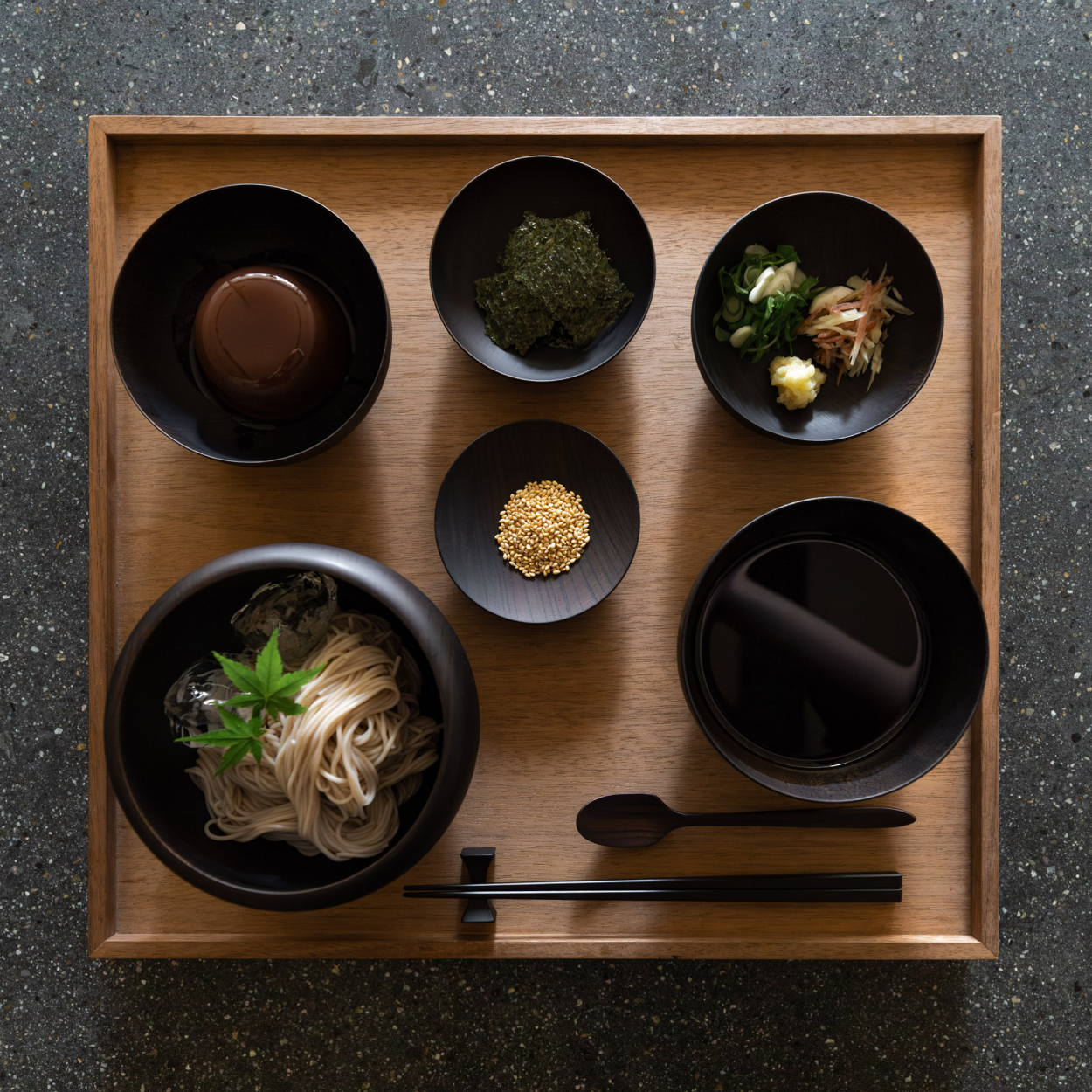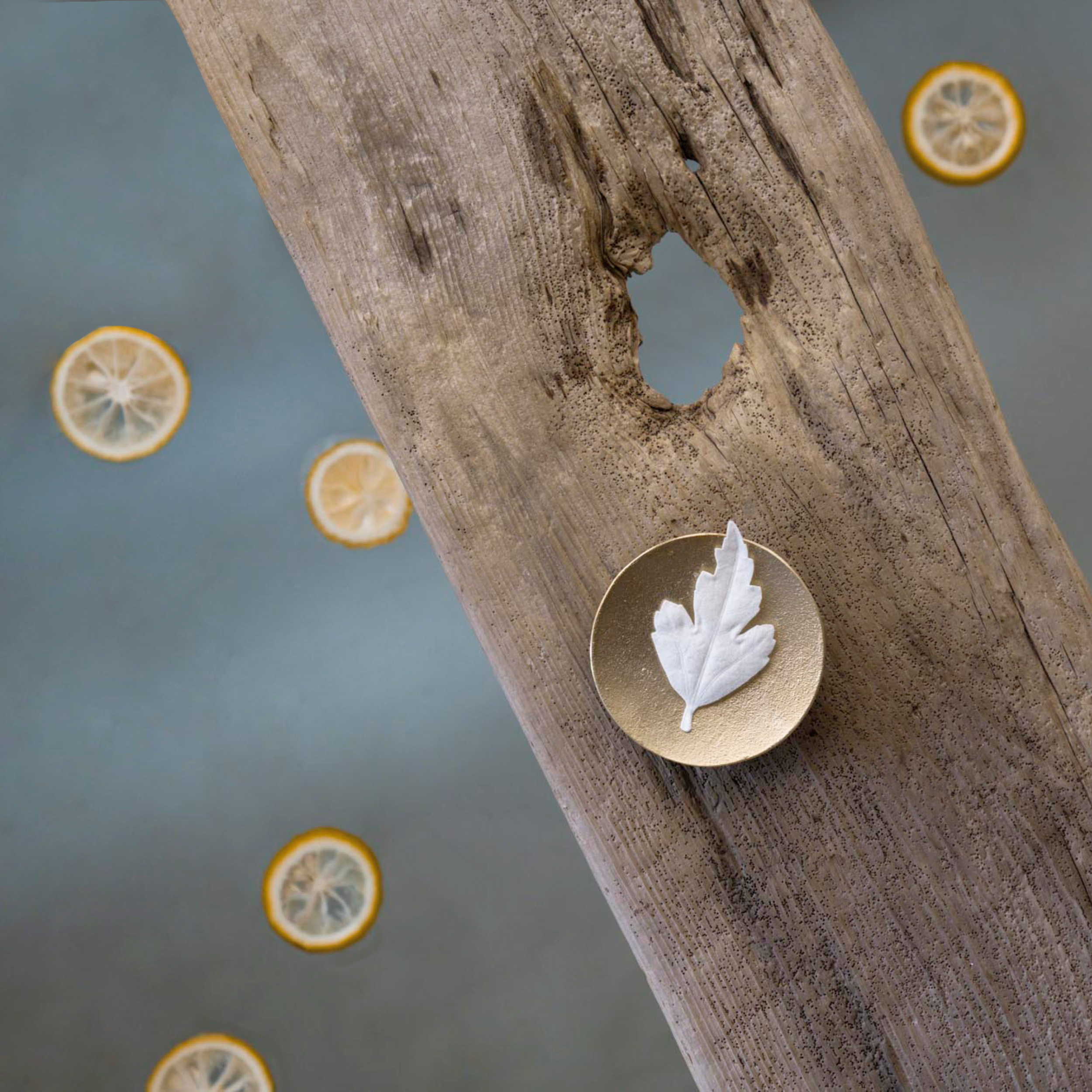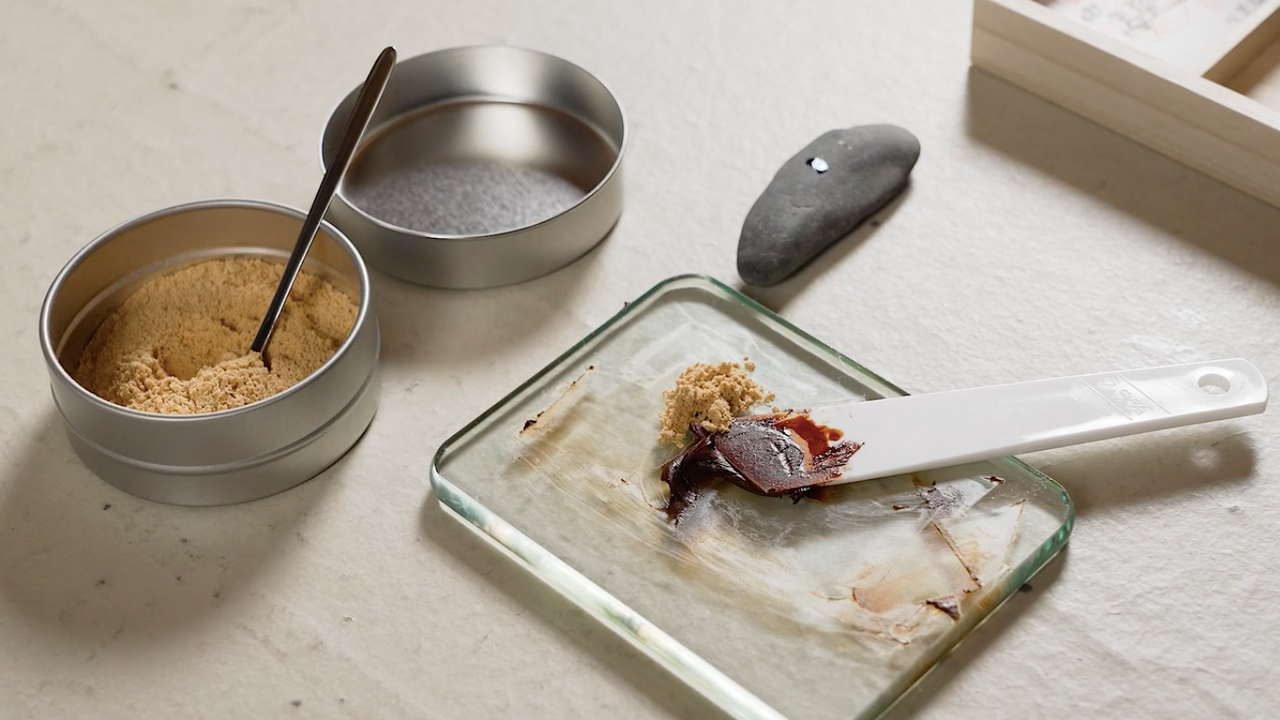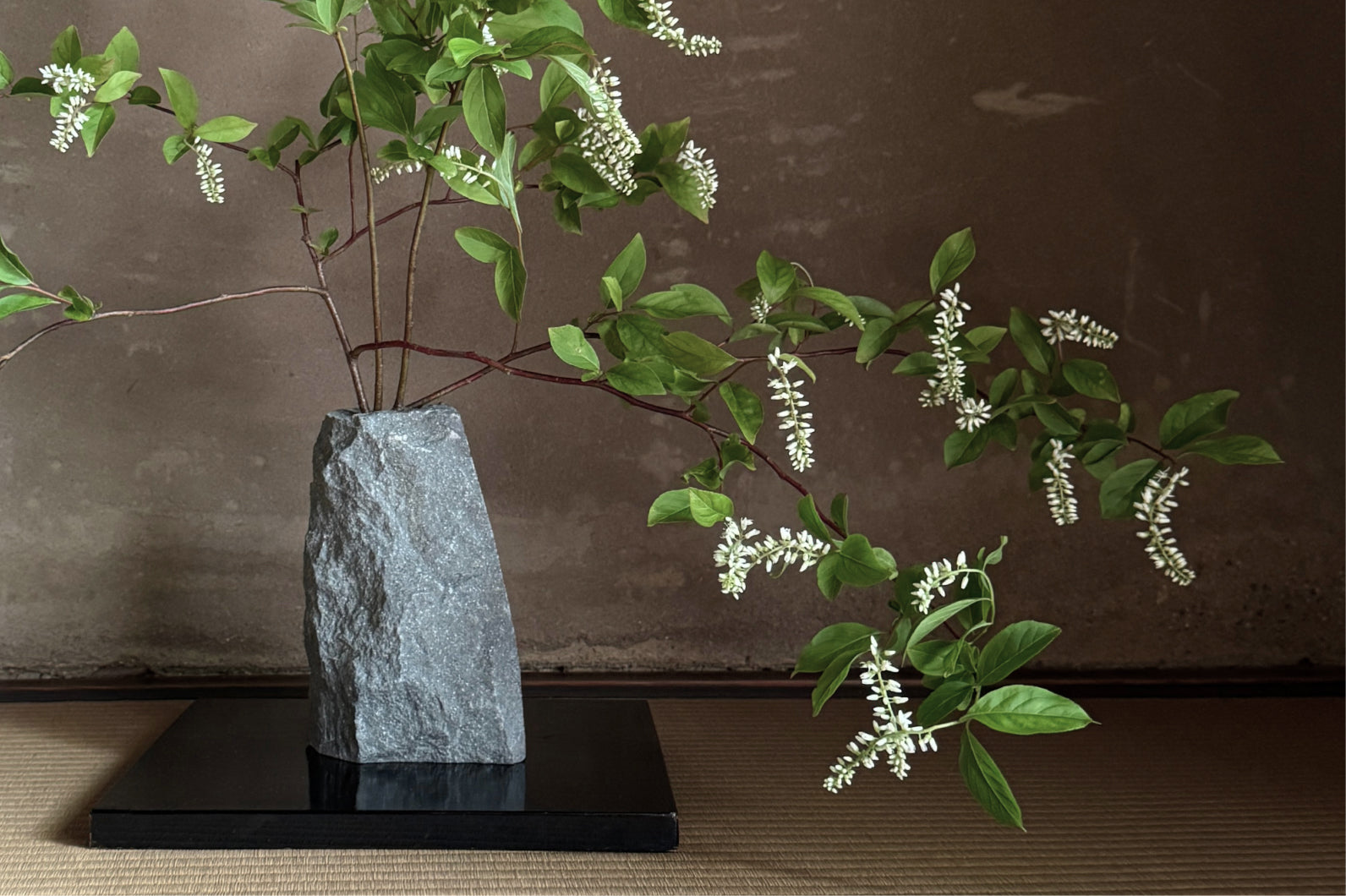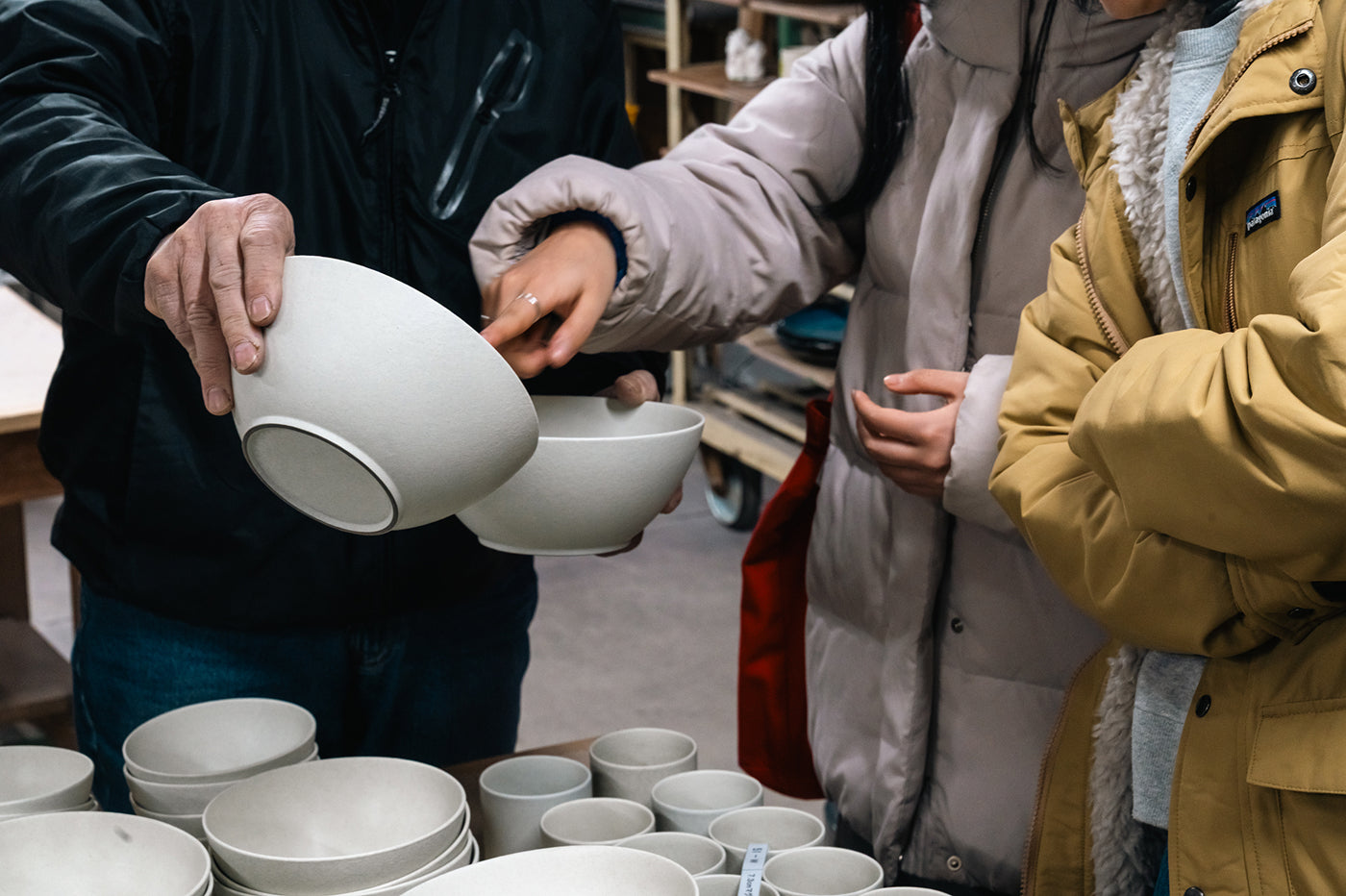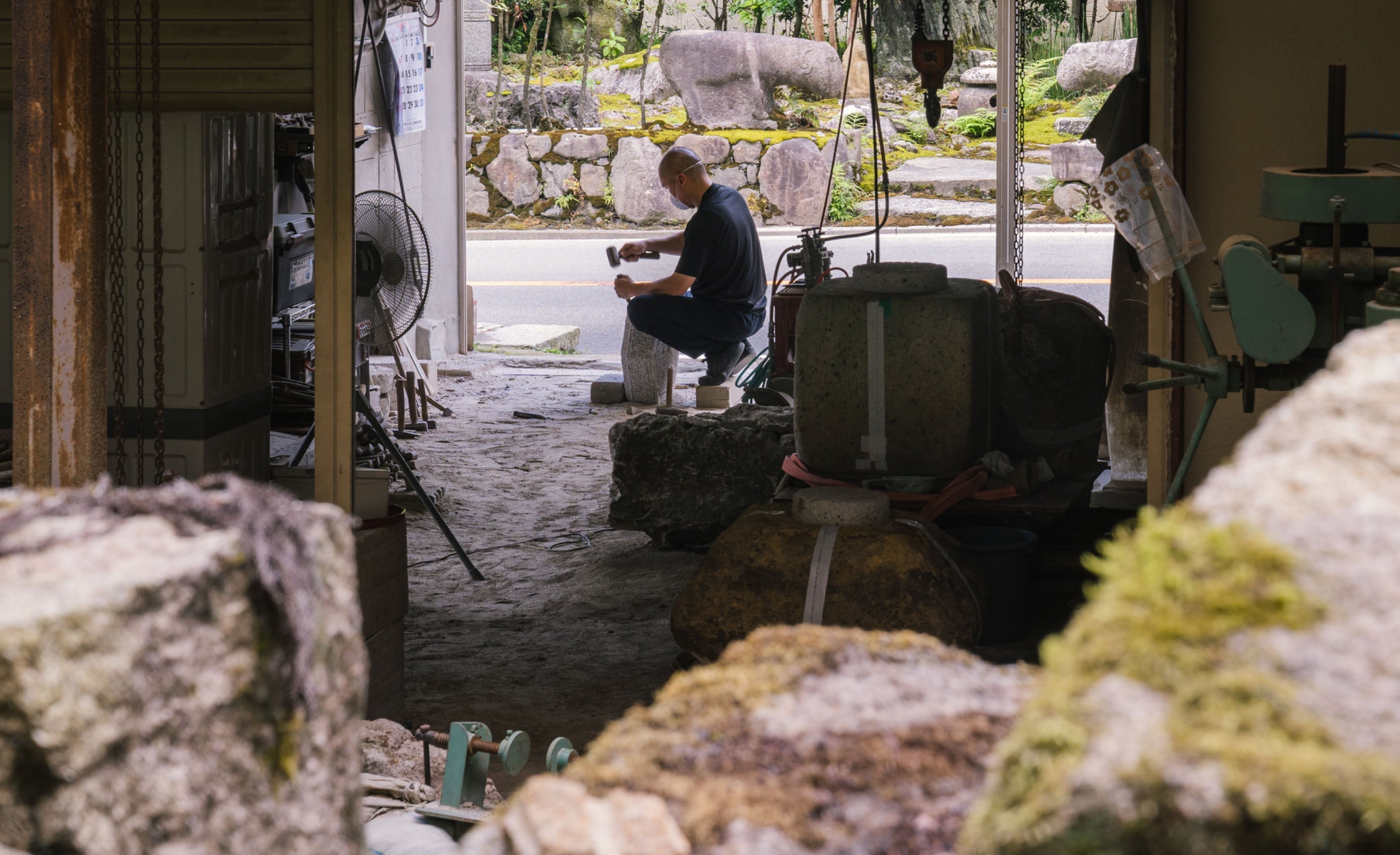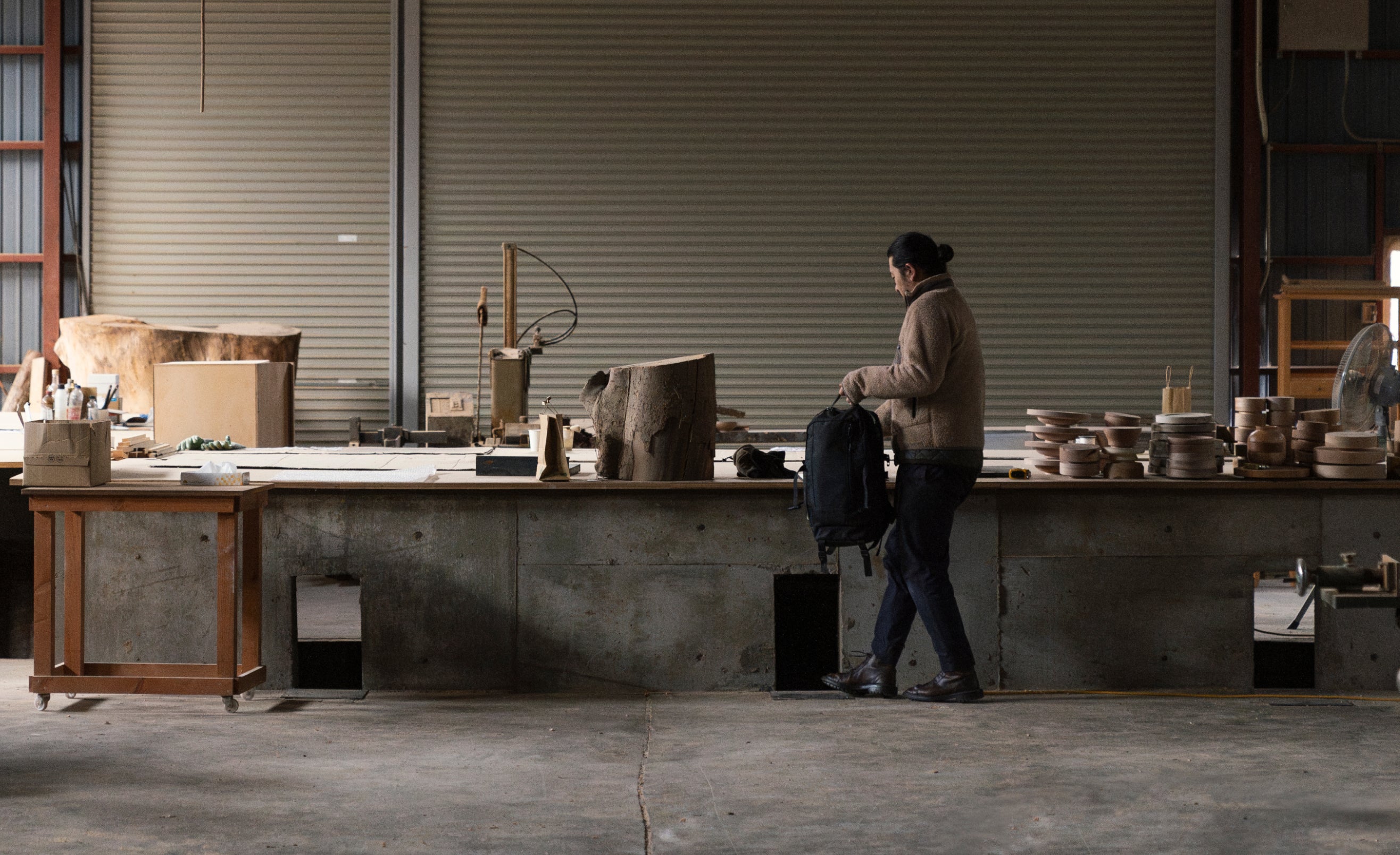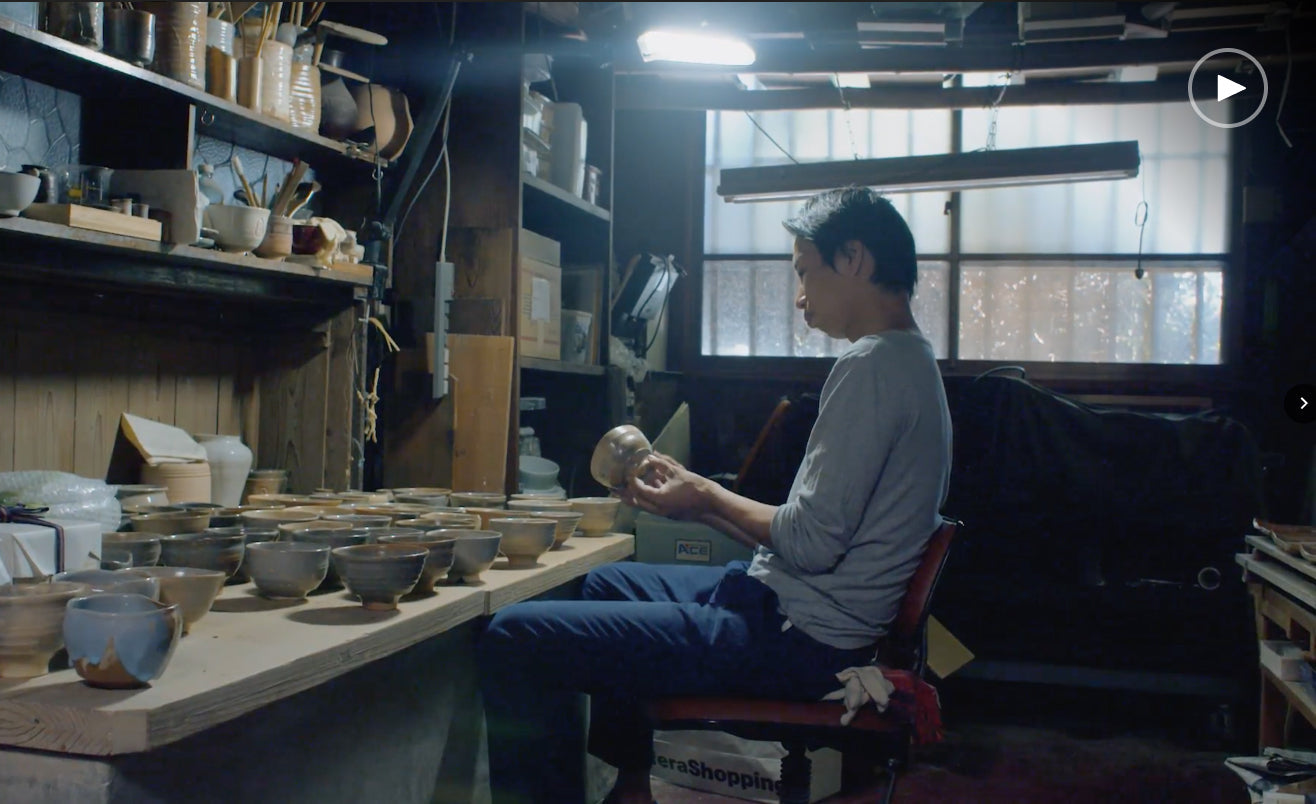Kokuso urushi is one of the top three most commonly-used urushi mixtures in kintsugi-repair. A close third to mugi urushi and sabi urushi. Kokuso, whose Chinese characters have multiple variations including 刻苧 and 木屎, is a putty made of kiurushi, mochi rice or wheat flour, kinoko wood powder, and sometimes fine cotton fibers, as well as powdered soil or clay. It is used to fill crevasses and fabricate chipped parts. In essence, kokuso urushi is made like a dressed up mugi urushi, while its application is more like sabi urushi.
SABI URUSHI VS. KOKUSO URUSHI
Under what circumstances does one use kokuso instead of sabi?
I tend to think about sabi as fat and kokuso as bones. What are the muscles then? That's for another day. Sabi is used for small chips or crevasses that measure no more than 3 mm or 0.1 in. For anything larger, a skeletal structure needs to be put in place. Framing from which we can create. This is why rougher materials like kinoko is mixed with mugi urushi to establish a strong framework. Kokuso is a strong mixture but incredibly porous, so the layers that follow, sabi and the colored urushi, are vital to ensure a sustainable and beautiful finish.
KOKUSO URUSHI RECIPE
Ingredients:
- White wheat flour
- Water
- Kiurushi*
- Kinoko*
Tool:
- Bamboo skewer*
- Utility knife
- Small spoon*
- Small spatula*
- Glass palette*
- Dropper*
*Included in our Advanced Kintsugi Kit, which is perfect for filling missing fragments.
Directions:
-
Shave the bamboo skewer with a utility knife to make a kokuso palette knife. The kokuso palette knife should have a flexible and round tip. More on tools in future journal entry.
-
Make mugi urushi.

-
Add an equal amount of kinoko to mugi urushi (1:1)** and thoroughly combine with the spatula. You will know when the mixture is ready when the wood powder is no longer visible and the mixture does not stick to the spatula or the glass palette. The kokuso urushi should roll off like pasta dough.



-
Use your kokuso palette knife to reconstruct missing fragments and fill deep crevasses with the kokuso urushi. First take a small amount of kokuso urushi and nudge the mixture into the nooks and crannies of the broken surface. Then build on it. Build no more than a depth of 5 mm or 0.25 in at a time as otherwise the inner area will remain soft even if the outer surface has hardened.

-
Each time you build, place in the muro to harden for 7 days.
Happy repairing!
**In kintsugi repair, we never speak about a specific amount of any ingredient as it very much depends on the size of breakage, so we always speak in ratios.
